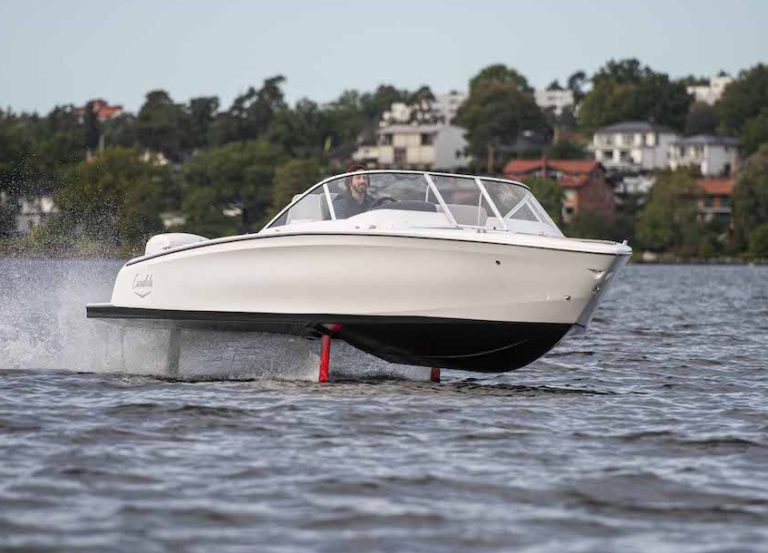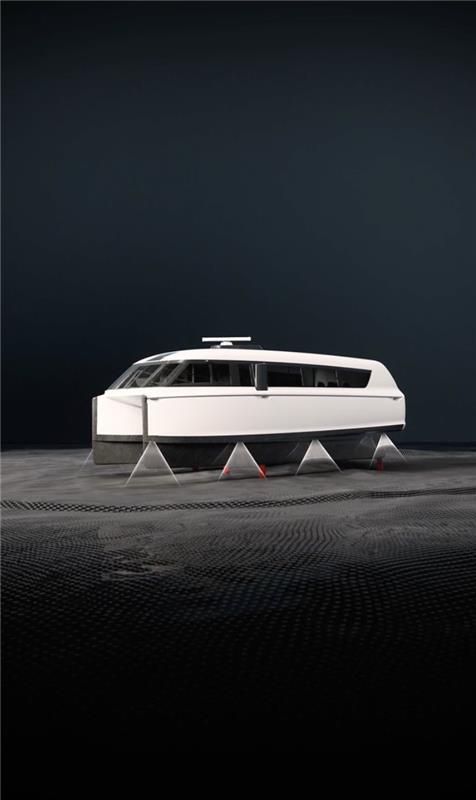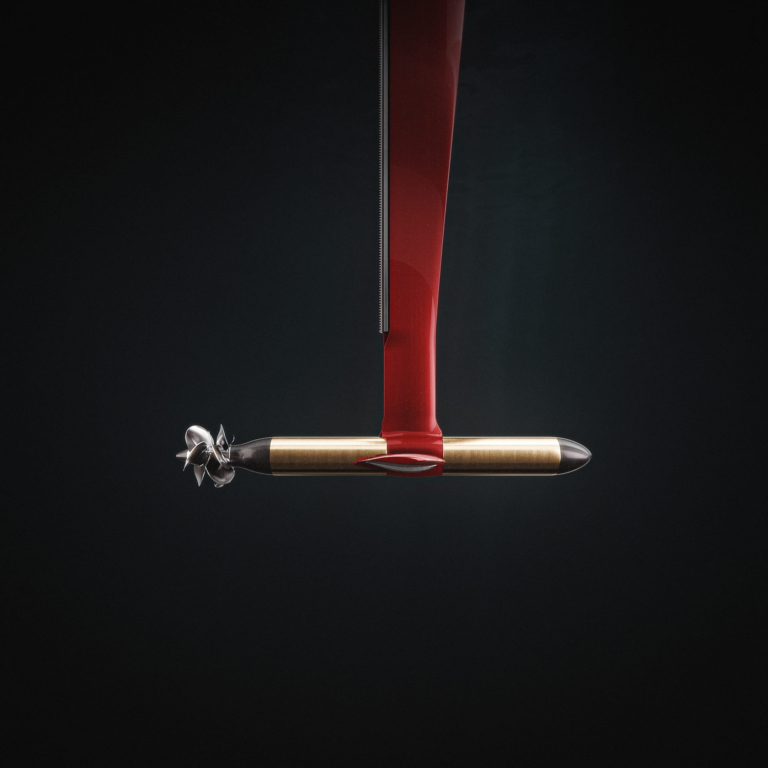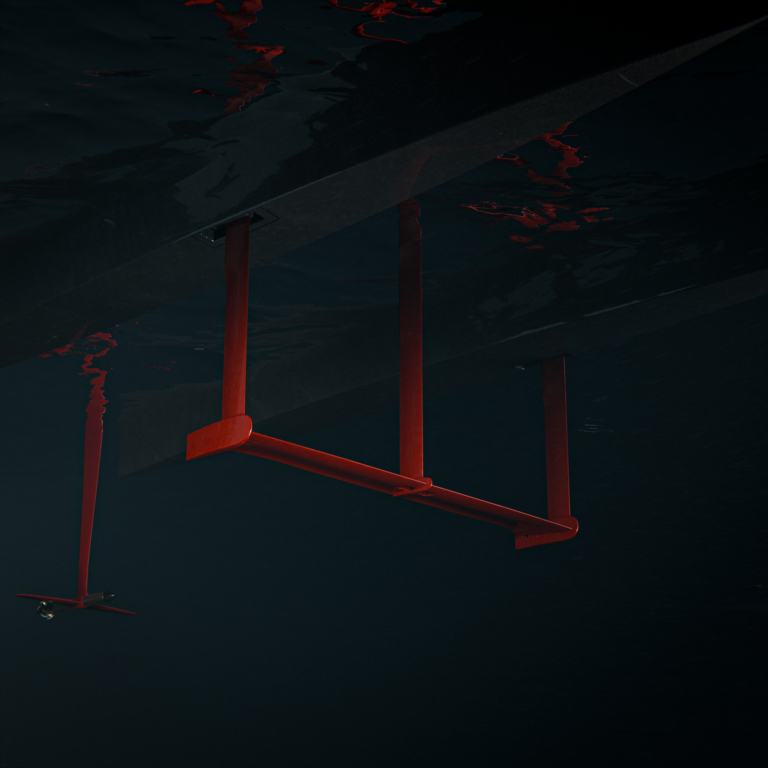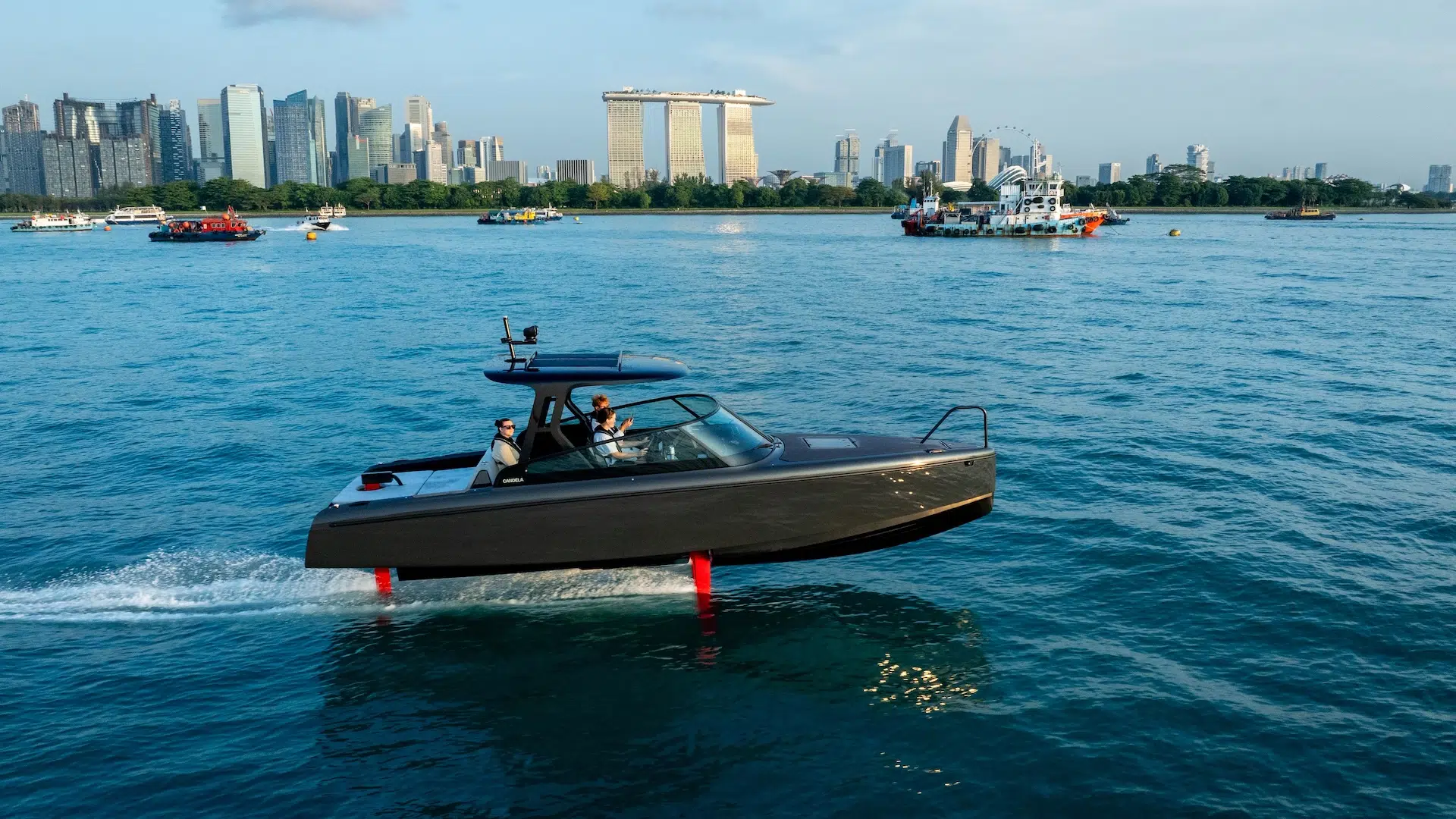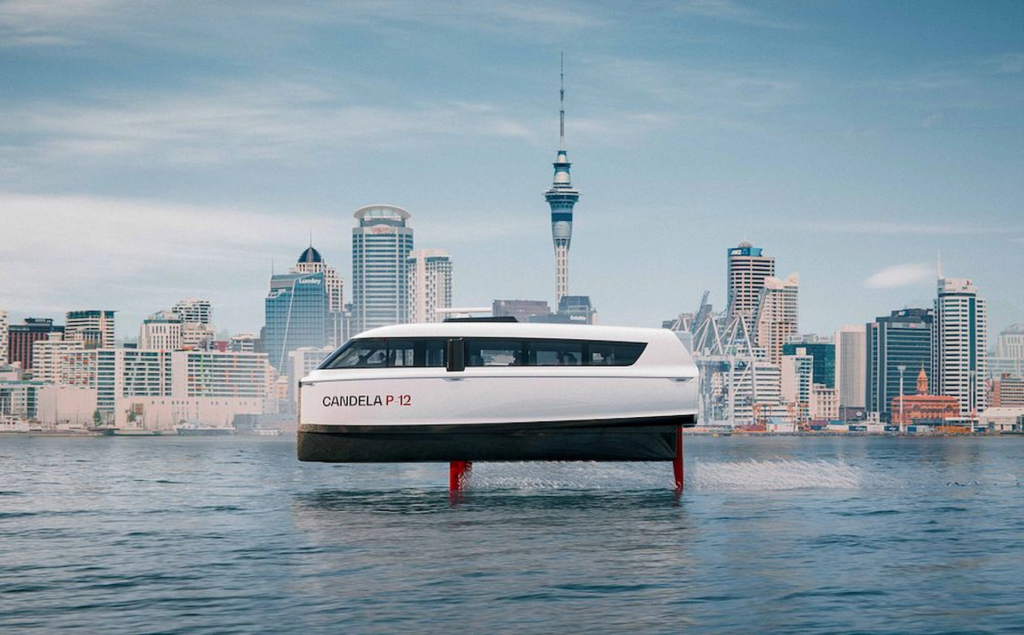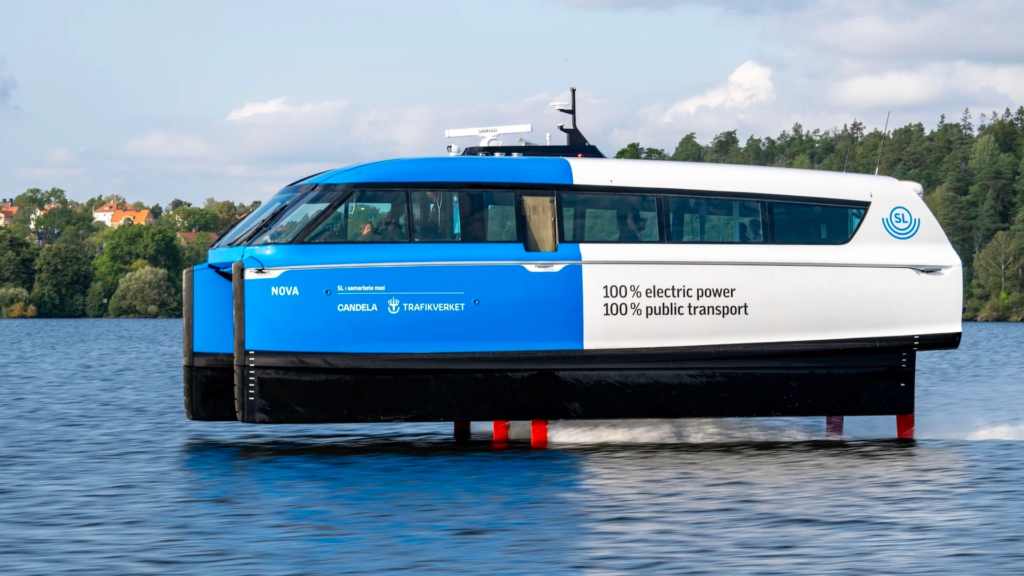Flying above the waves, it offers a completely silent ride, thanks to its direct-drive, fully submerged Candela C-POD motor. It operates without a mechanical transmission, making it maintenance-free while eliminating the need for oil or cooling fluid.
At the heart of the vessel is the Flight Controller, a digital system that uses a variety of sensors to maintain flight height, pitch, and roll, ensuring a stable ride even in waves and wind.
“It’s an experience like no other. It’s akin to a magic carpet ride—silent, smooth, and stable. You can have a normal conversation with passengers, and since the boat doesn’t roll or pitch, you won’t get seasick,” says Gustav Hasselskog, CEO and founder of Candela, who is in Auckland for the launch. He is also there to discuss New Zealand’s first foiling electric ferry, which Candela is set to deliver.
Flying ferries can Fix Auckland’s transport challenges
As announced in 2024, New Zealand power company Meridian will take delivery of a Candela P-12, the world’s first electric foiling ferry, which was introduced last year.
The 30-passenger P-12 is already in service in Stockholm’s public transport system, where it has been a major success, cutting commute times in half with its 25-knot cruising speed. The vessel has also received an exemption from speed limits in Stockholm’s city center, as its hydrofoils eliminate wave damage. So far, every departure has been fully booked, and the P-12 has demonstrated a 95% reduction in carbon dioxide emissions per passenger kilometer compared to conventional ferries.
Designed for efficient mass transport, the P-12 offers easy boarding through a wide bow ramp, accommodating passengers with strollers, bikes, and wheelchairs. Flying above the waves, it delivers a smooth and silent ride while also significantly reducing operational costs, making it an attractive option for operators looking to transition to zero-emission vessels.
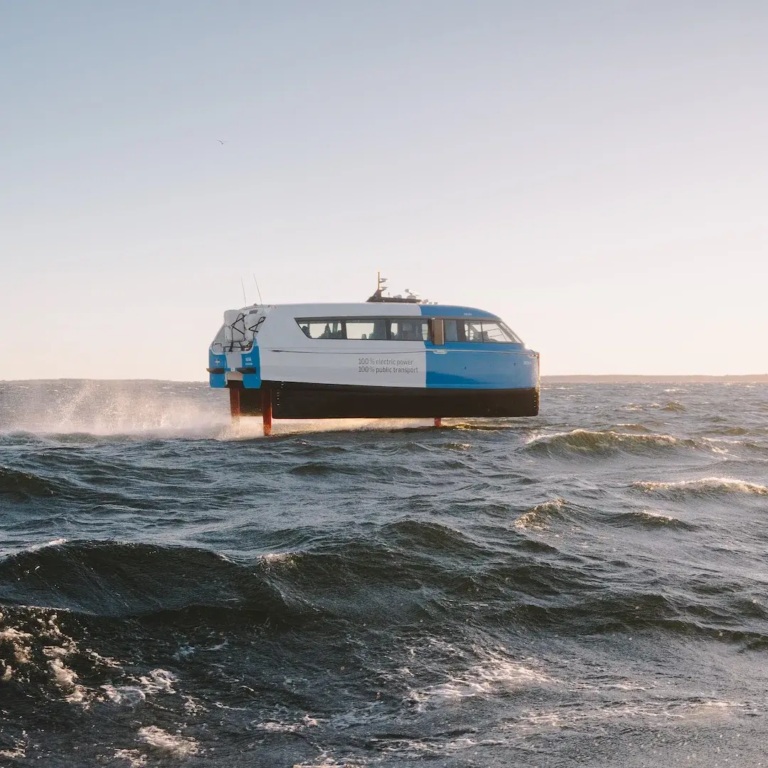 Overview
Overview 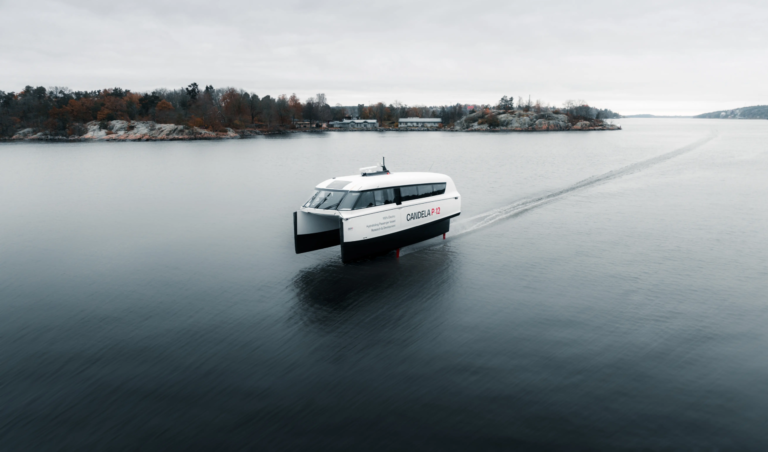 P-12
P-12 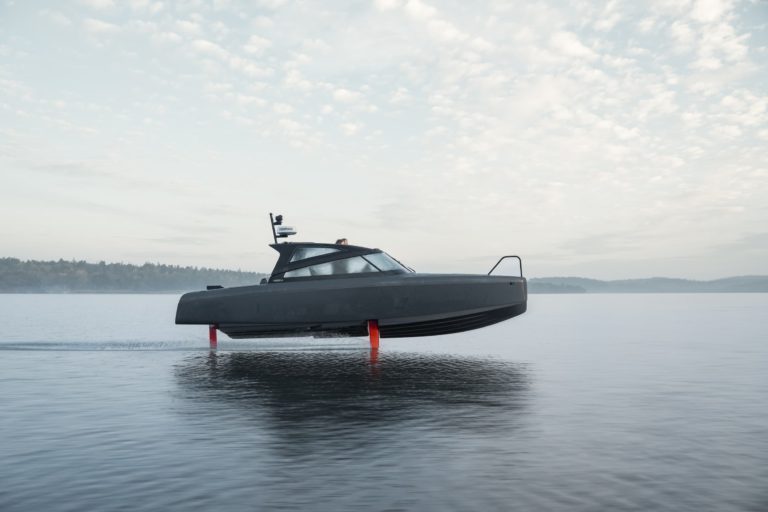
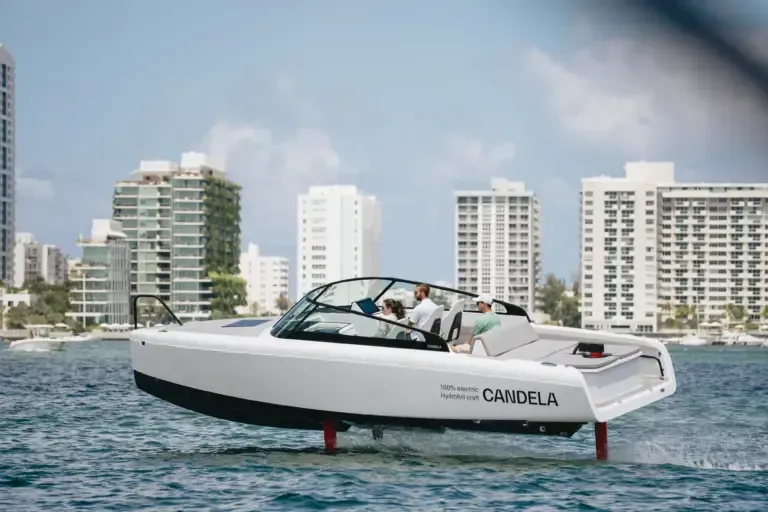 C-8
C-8 